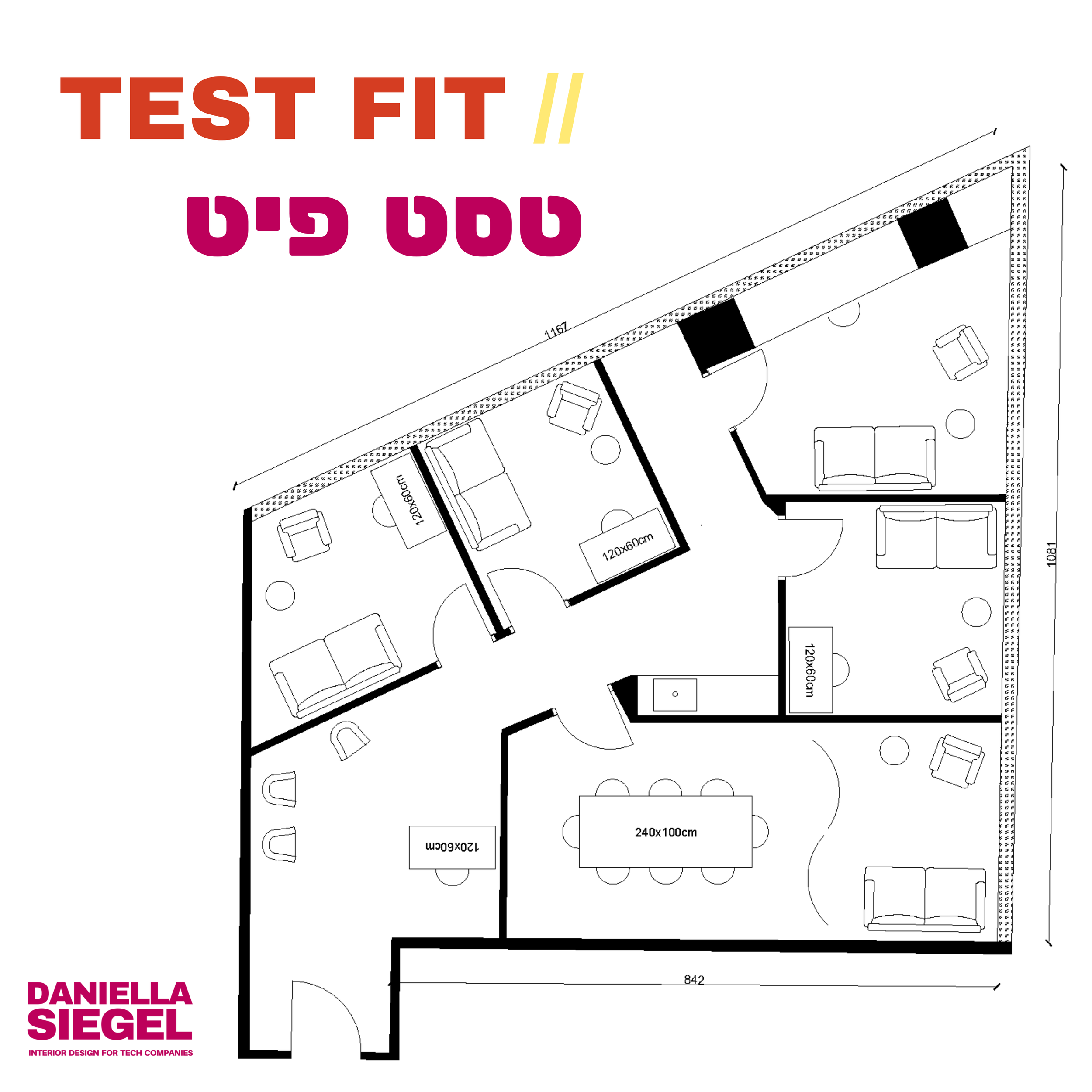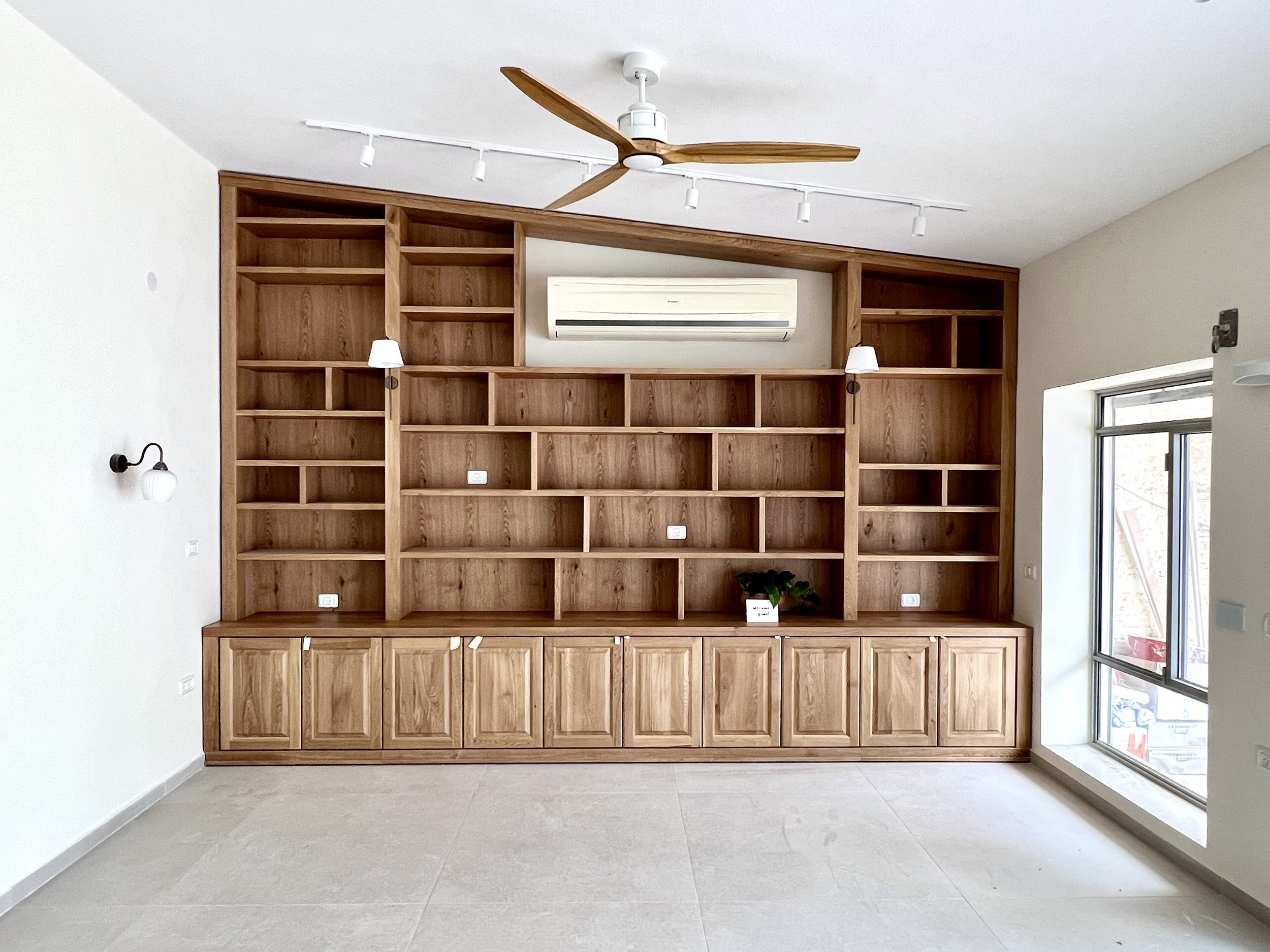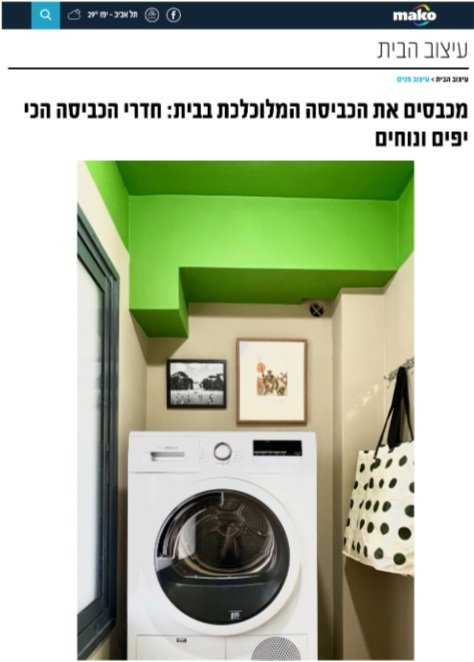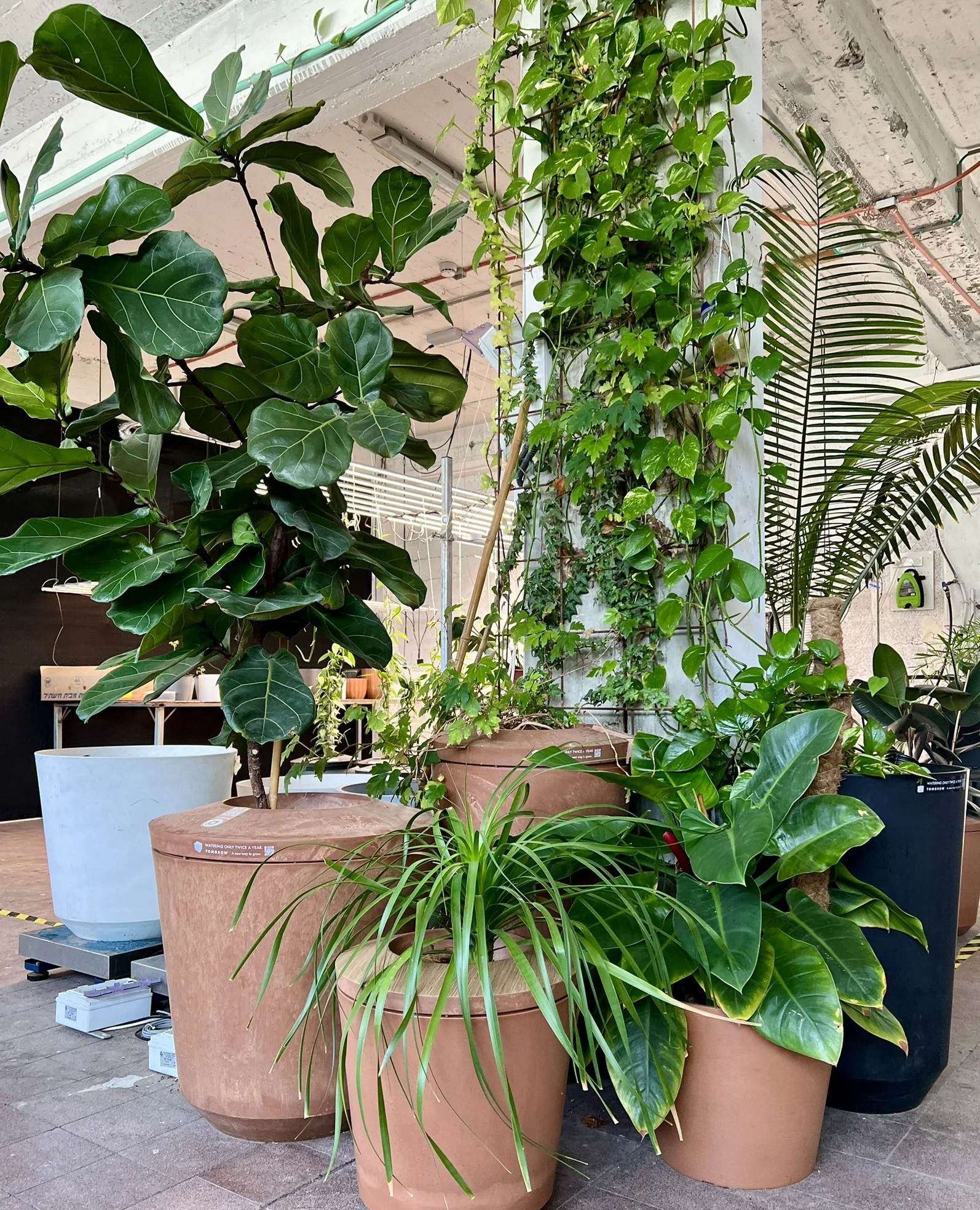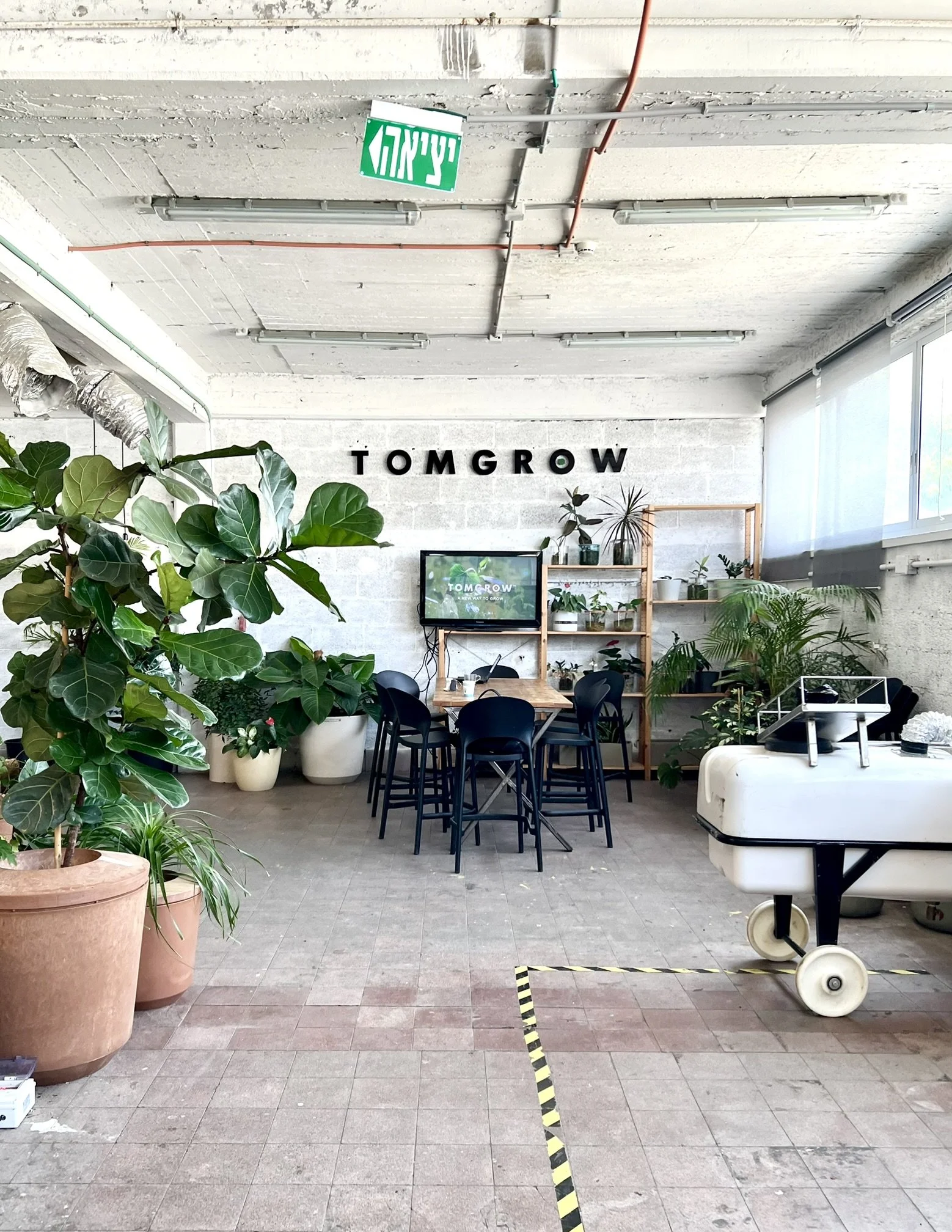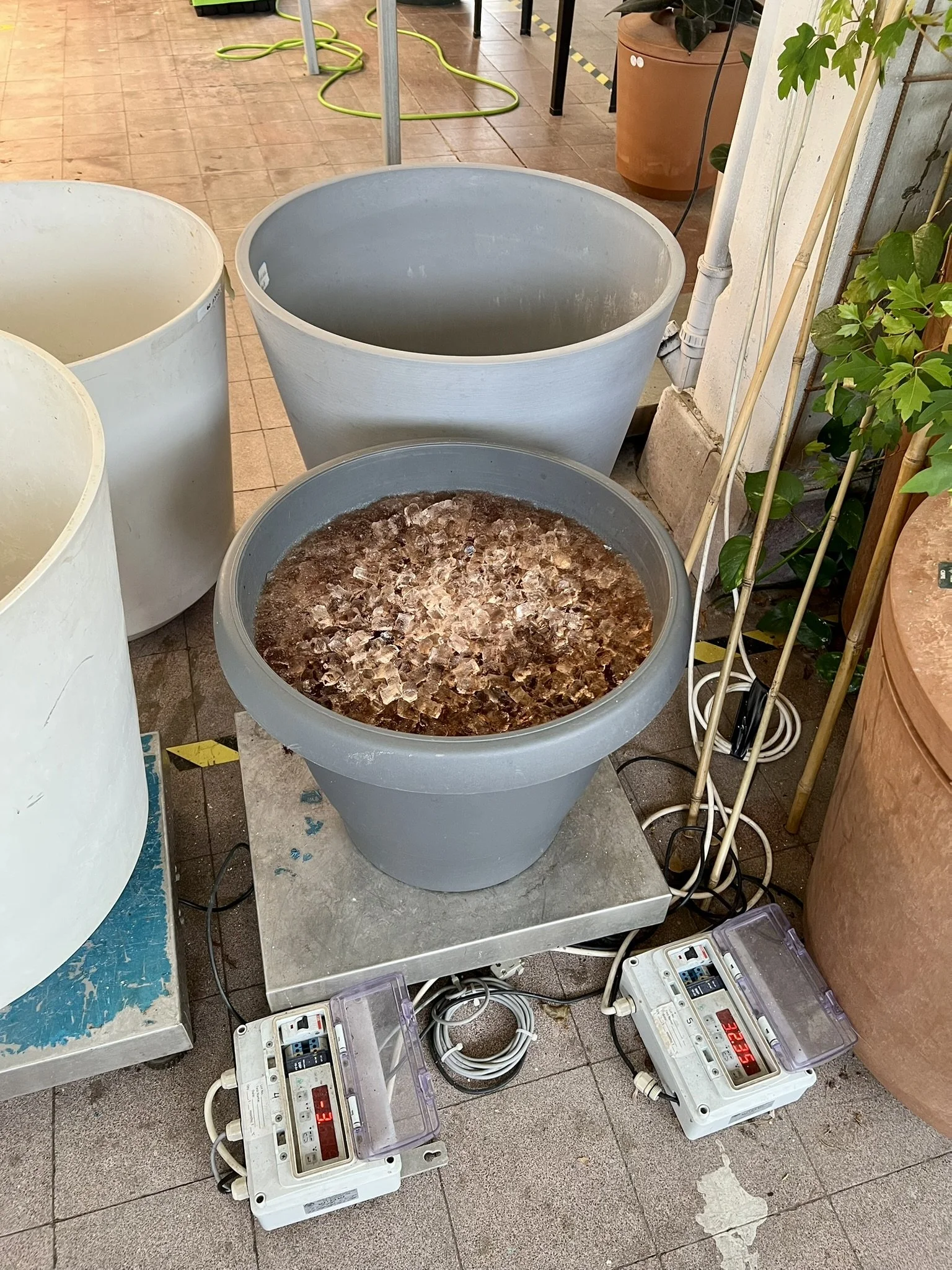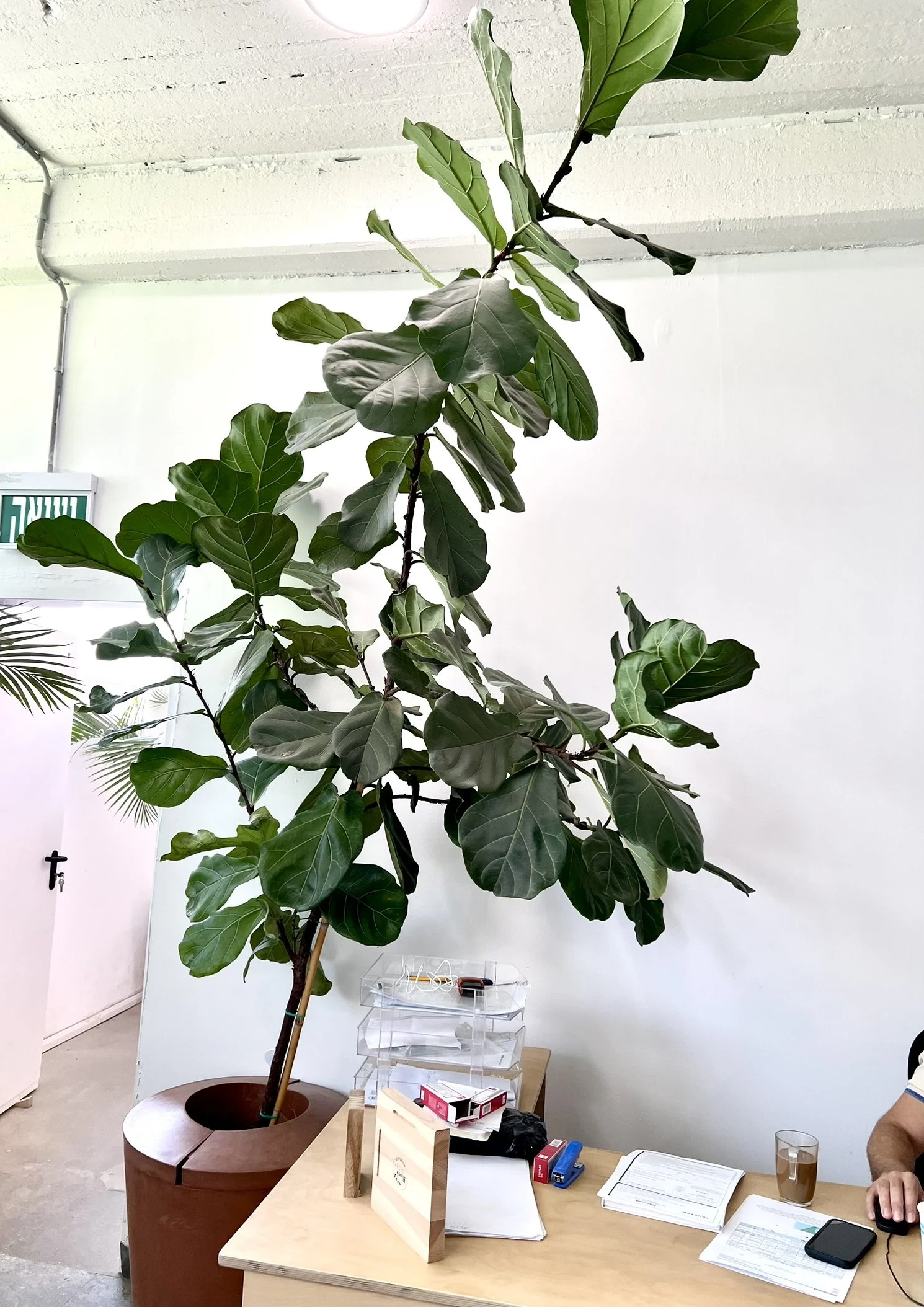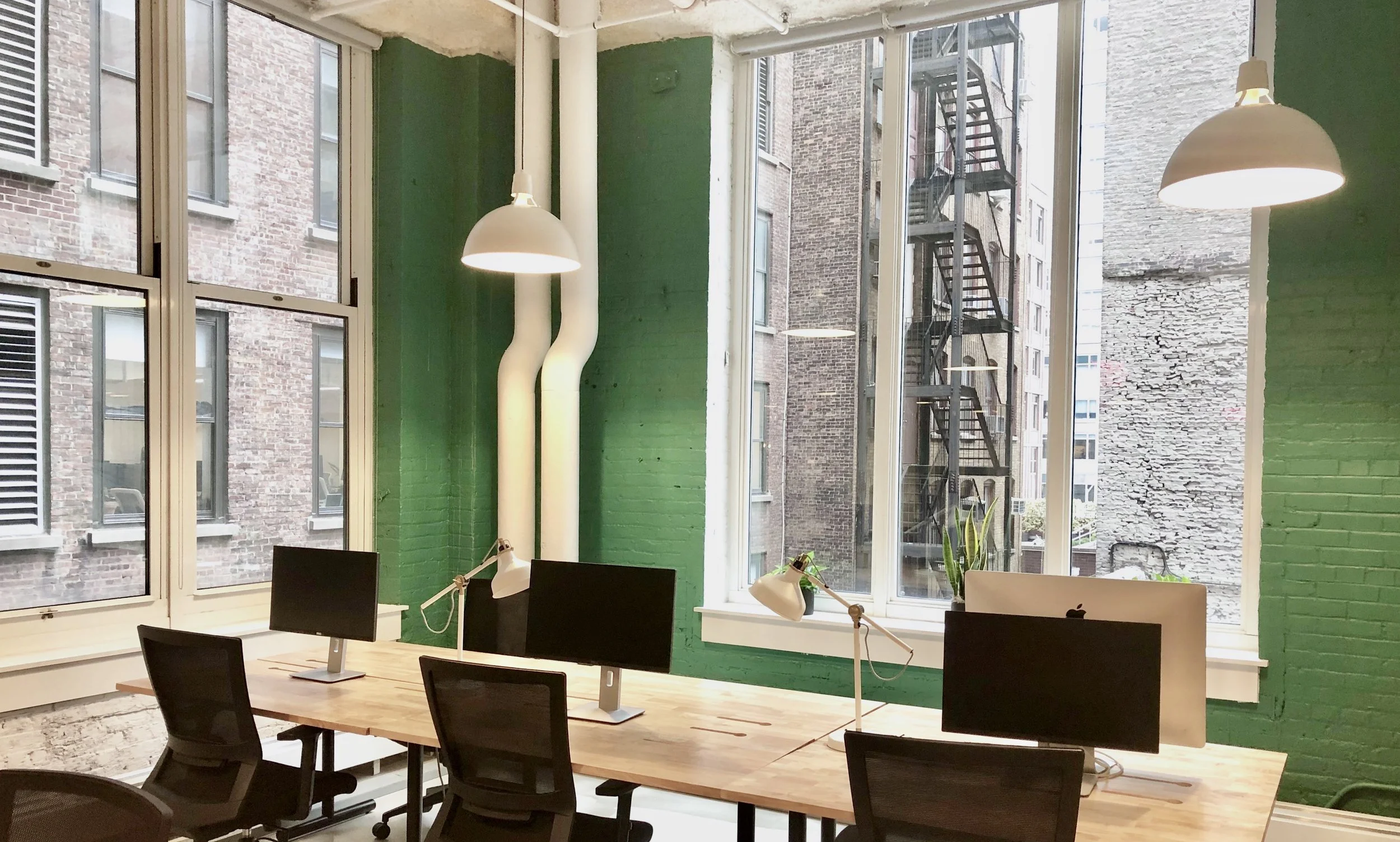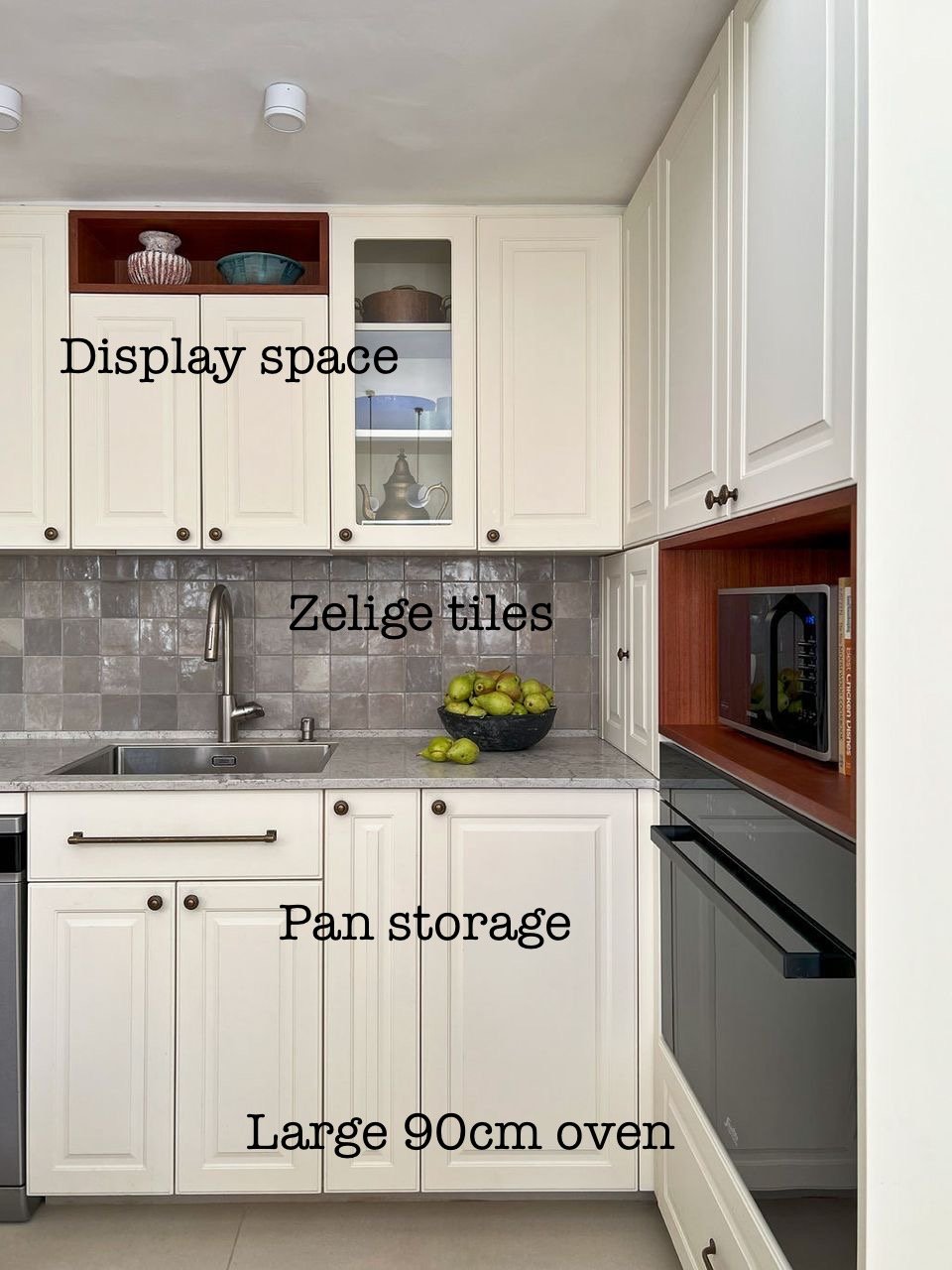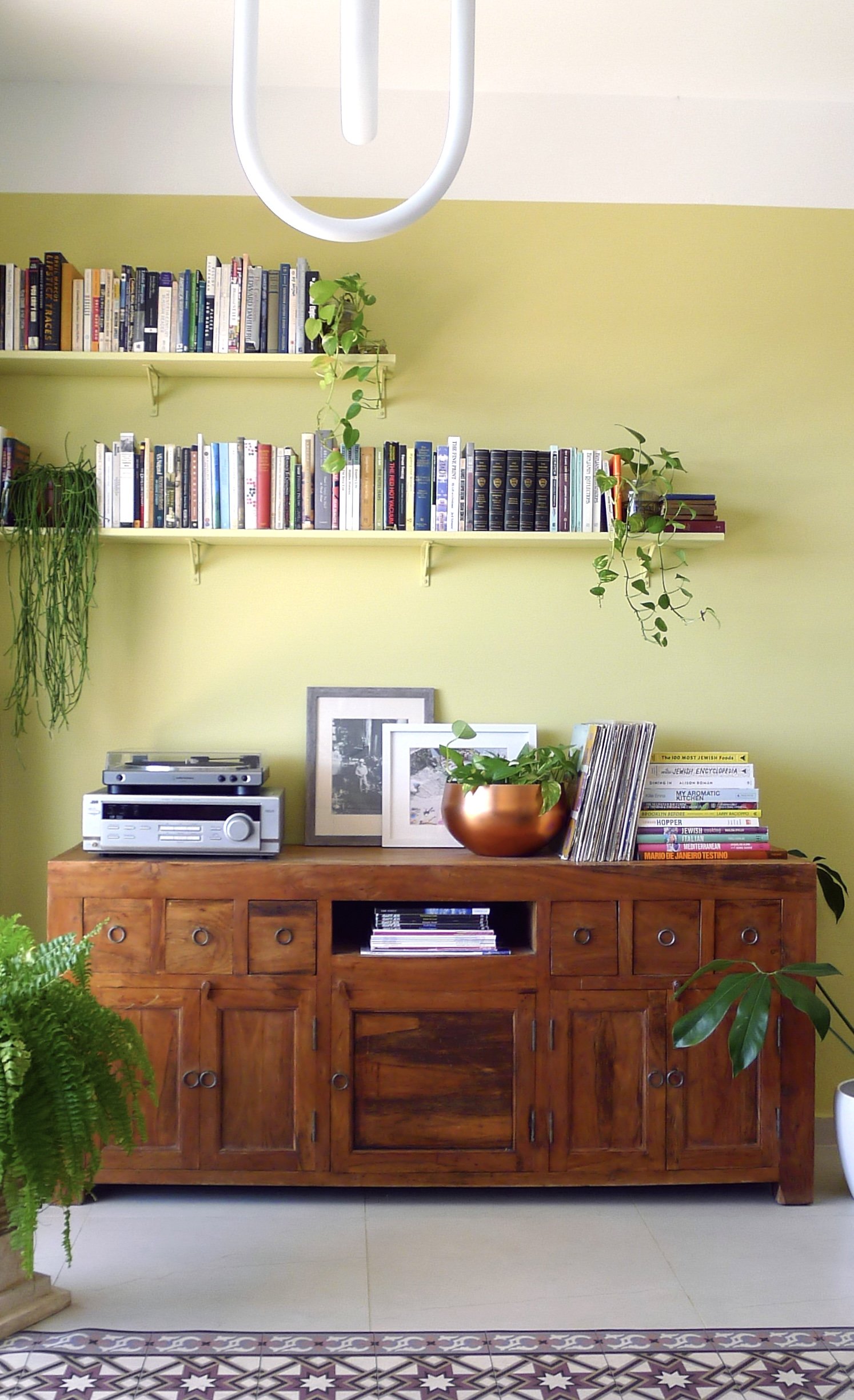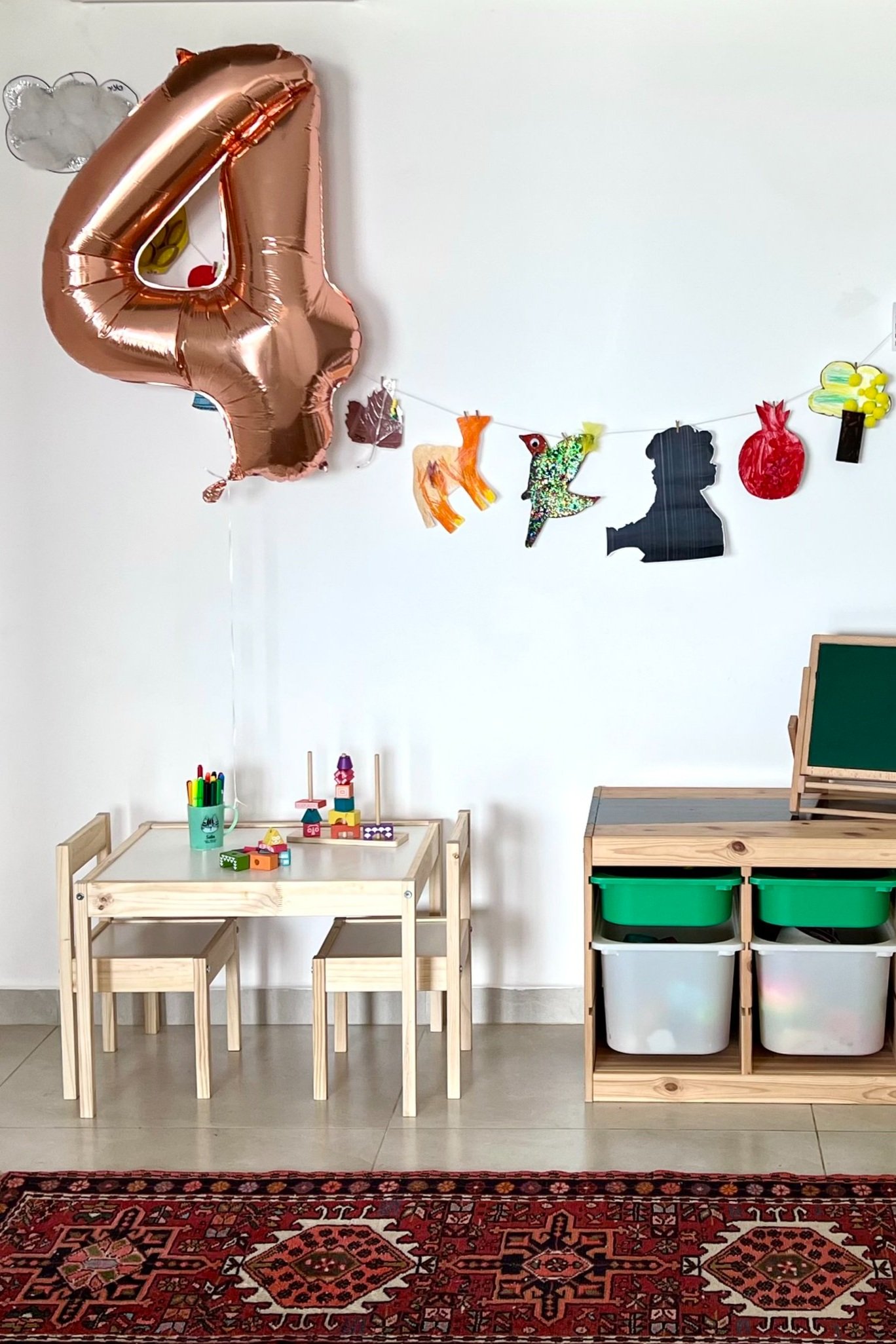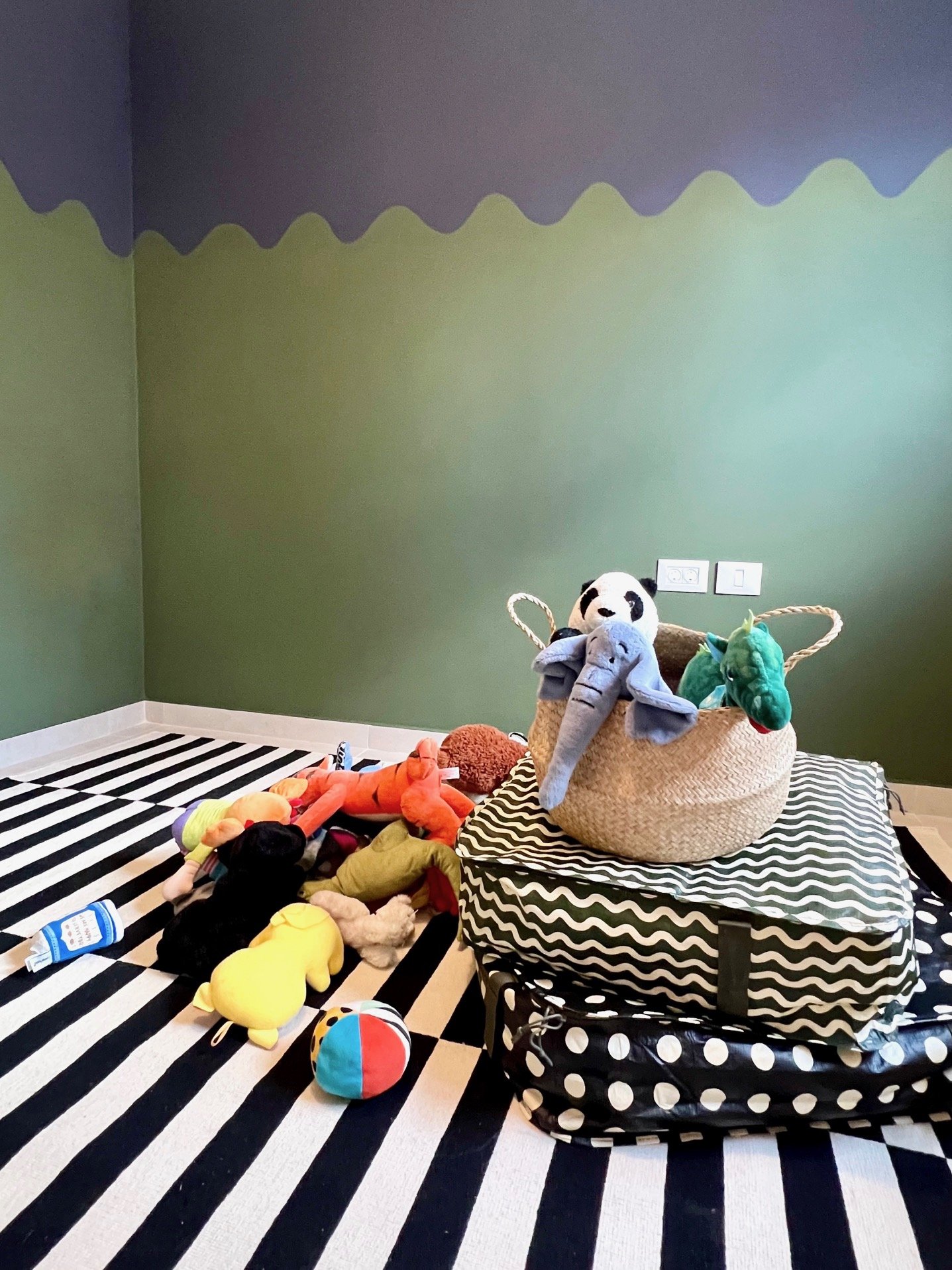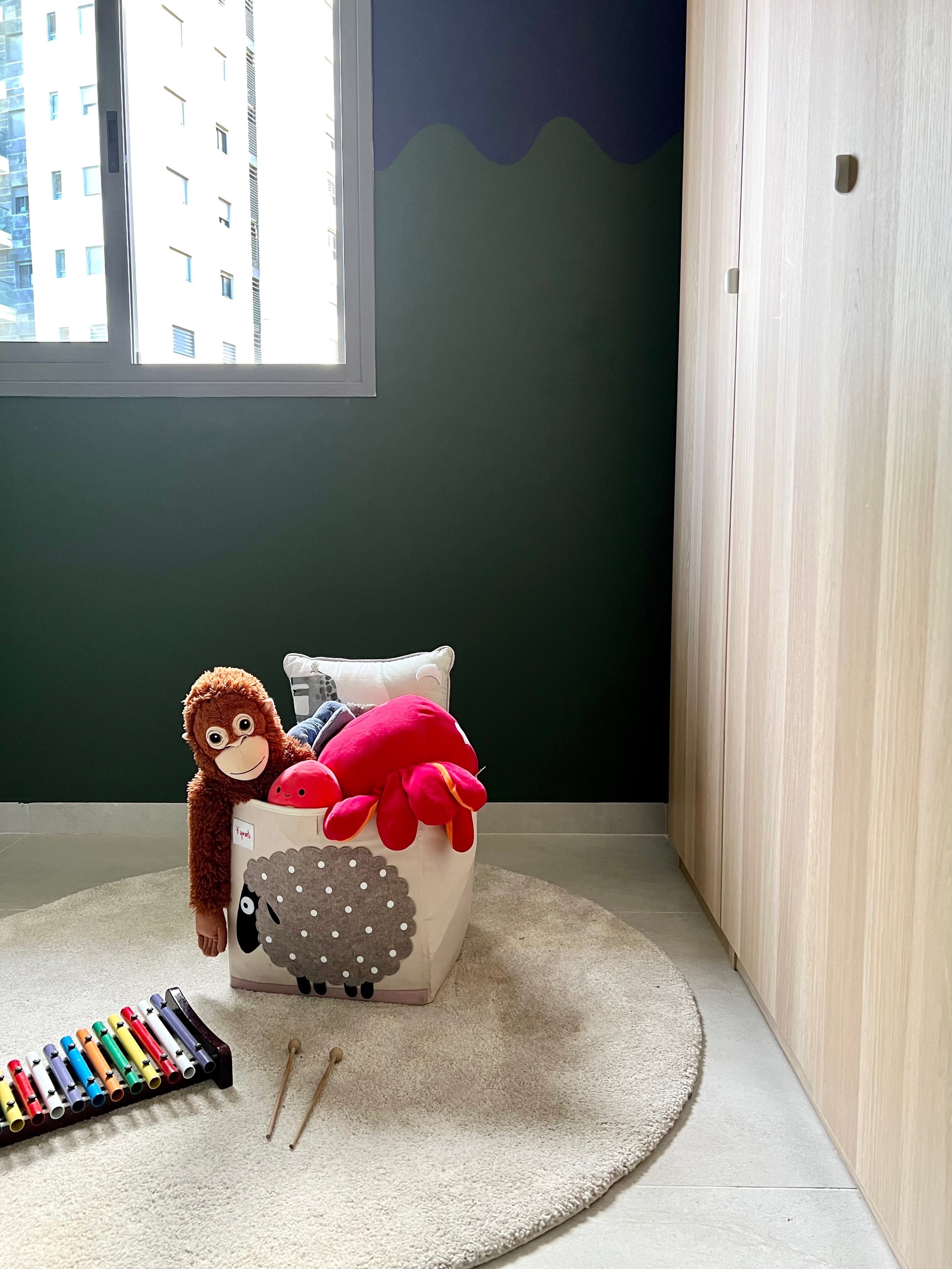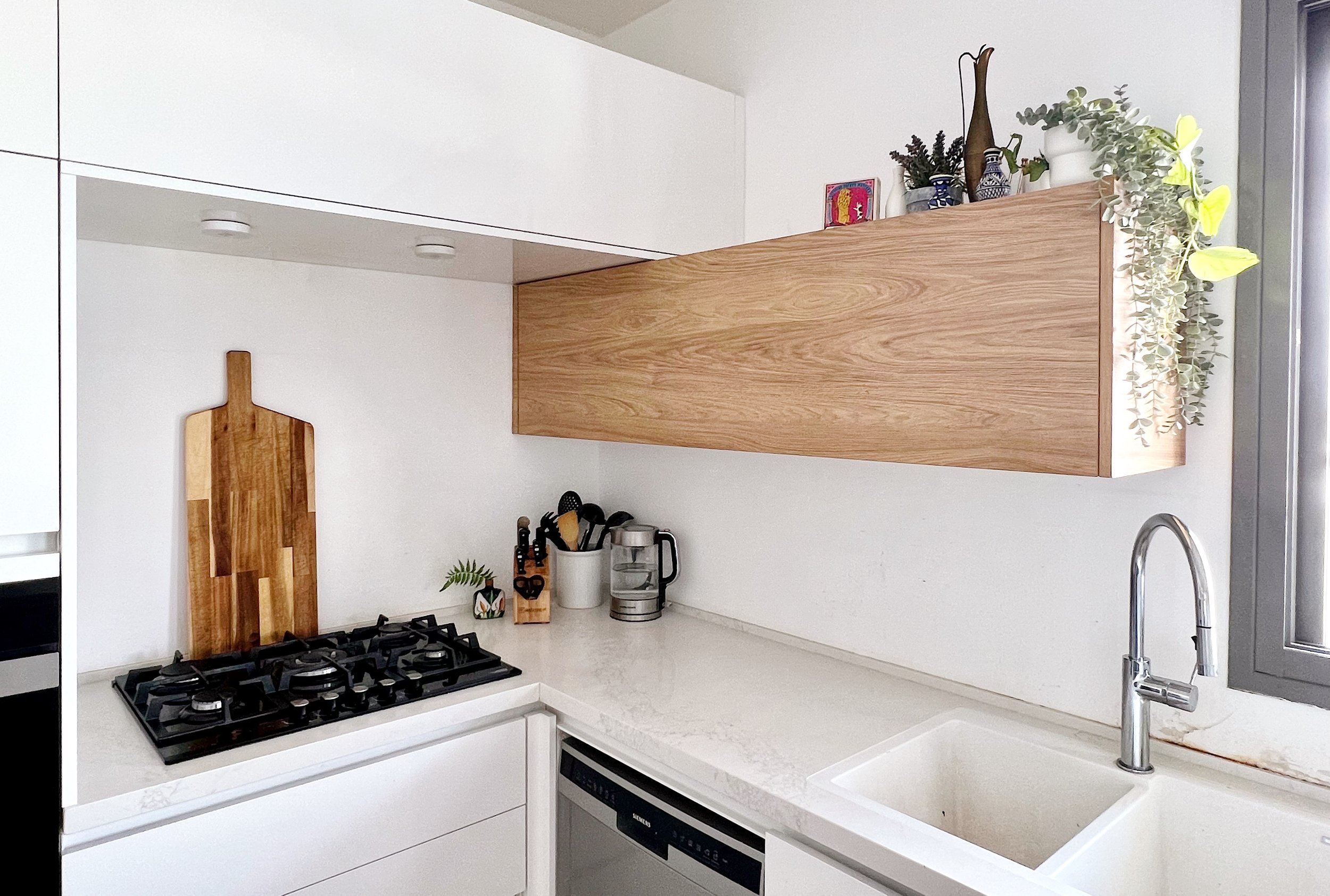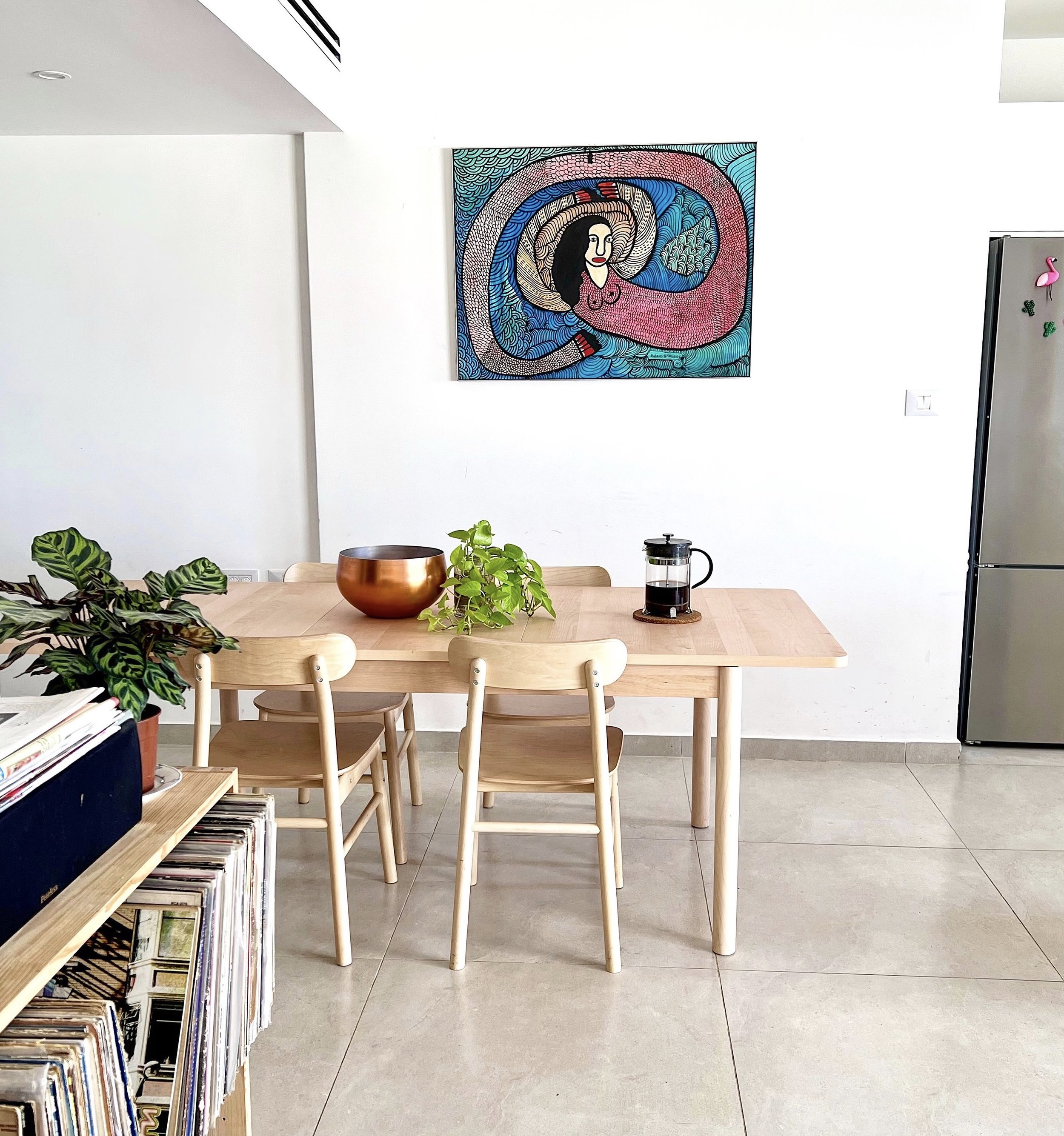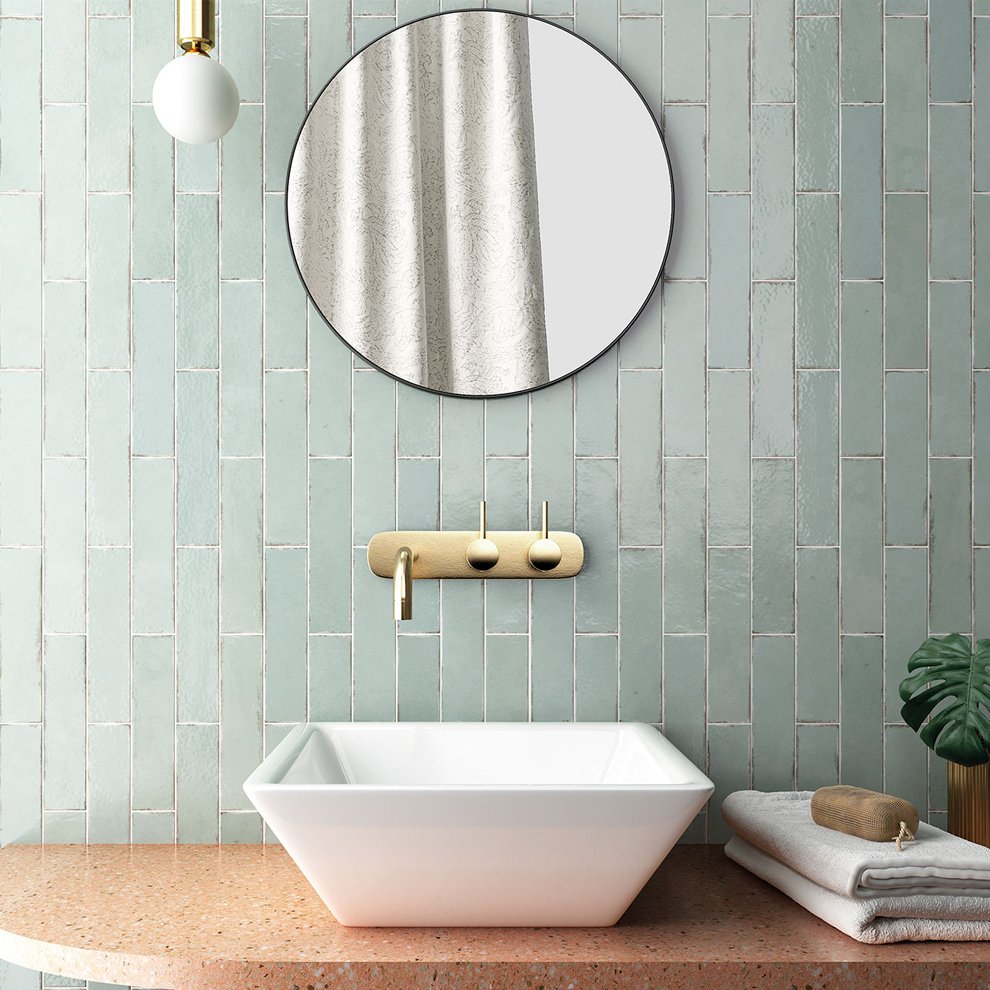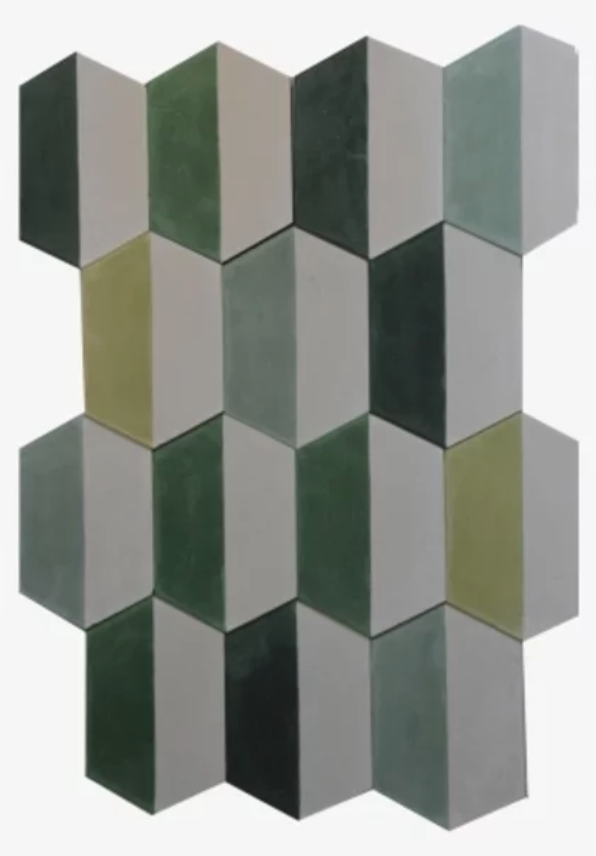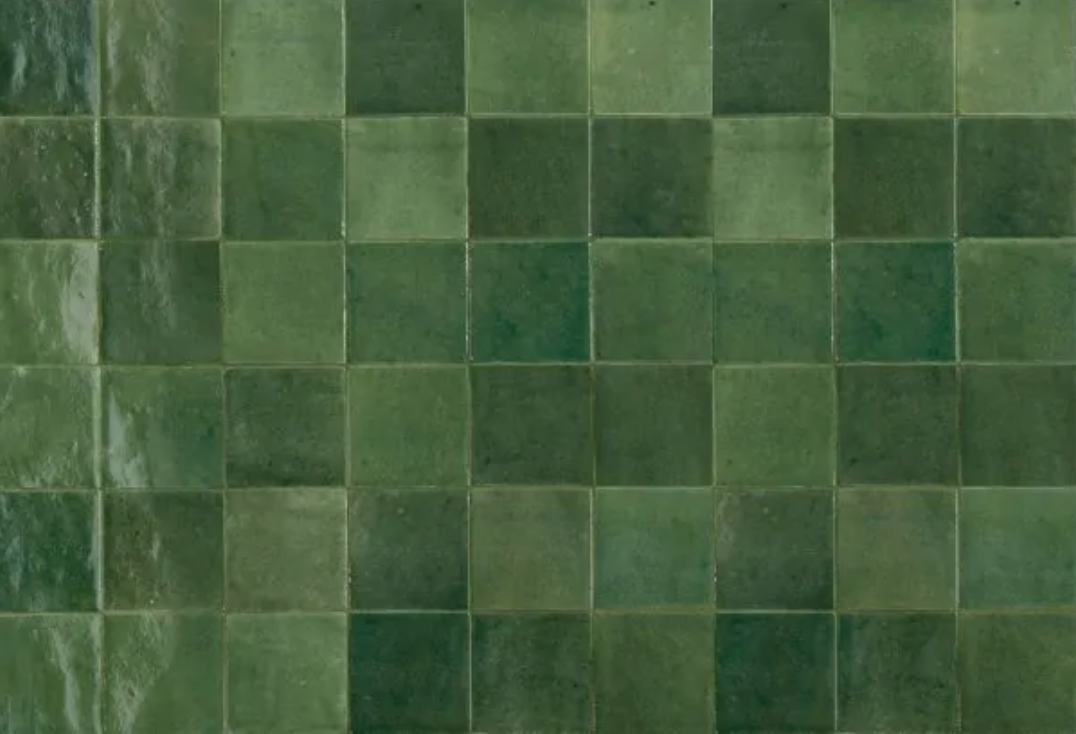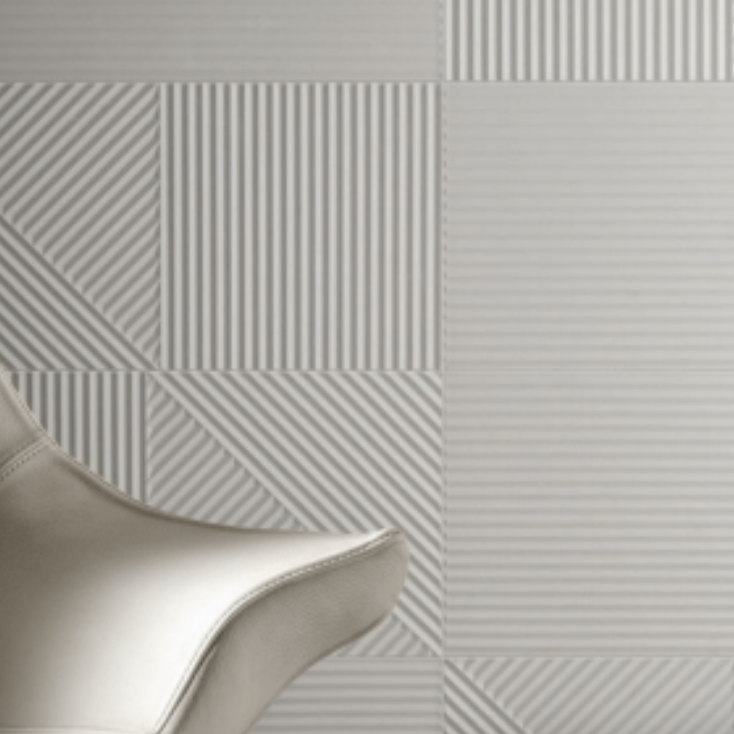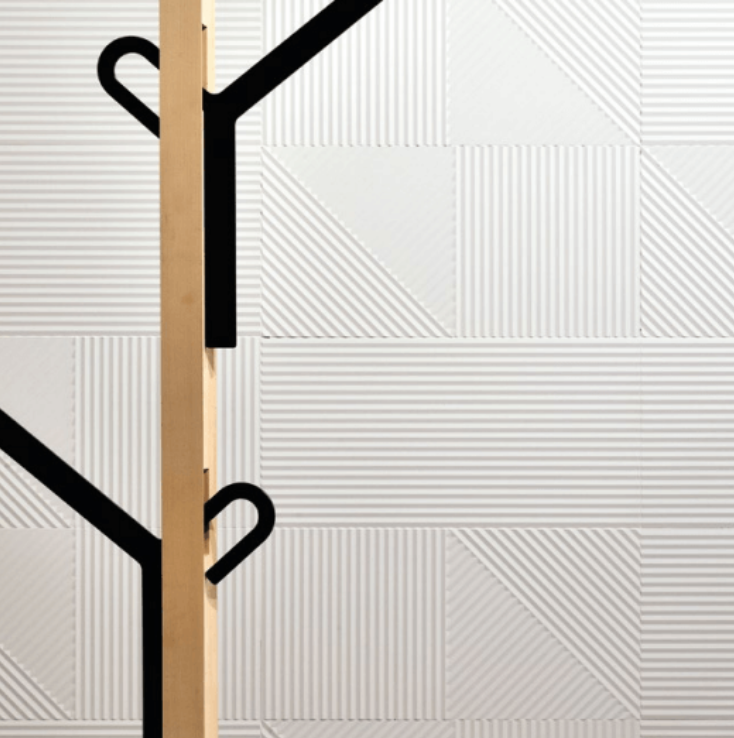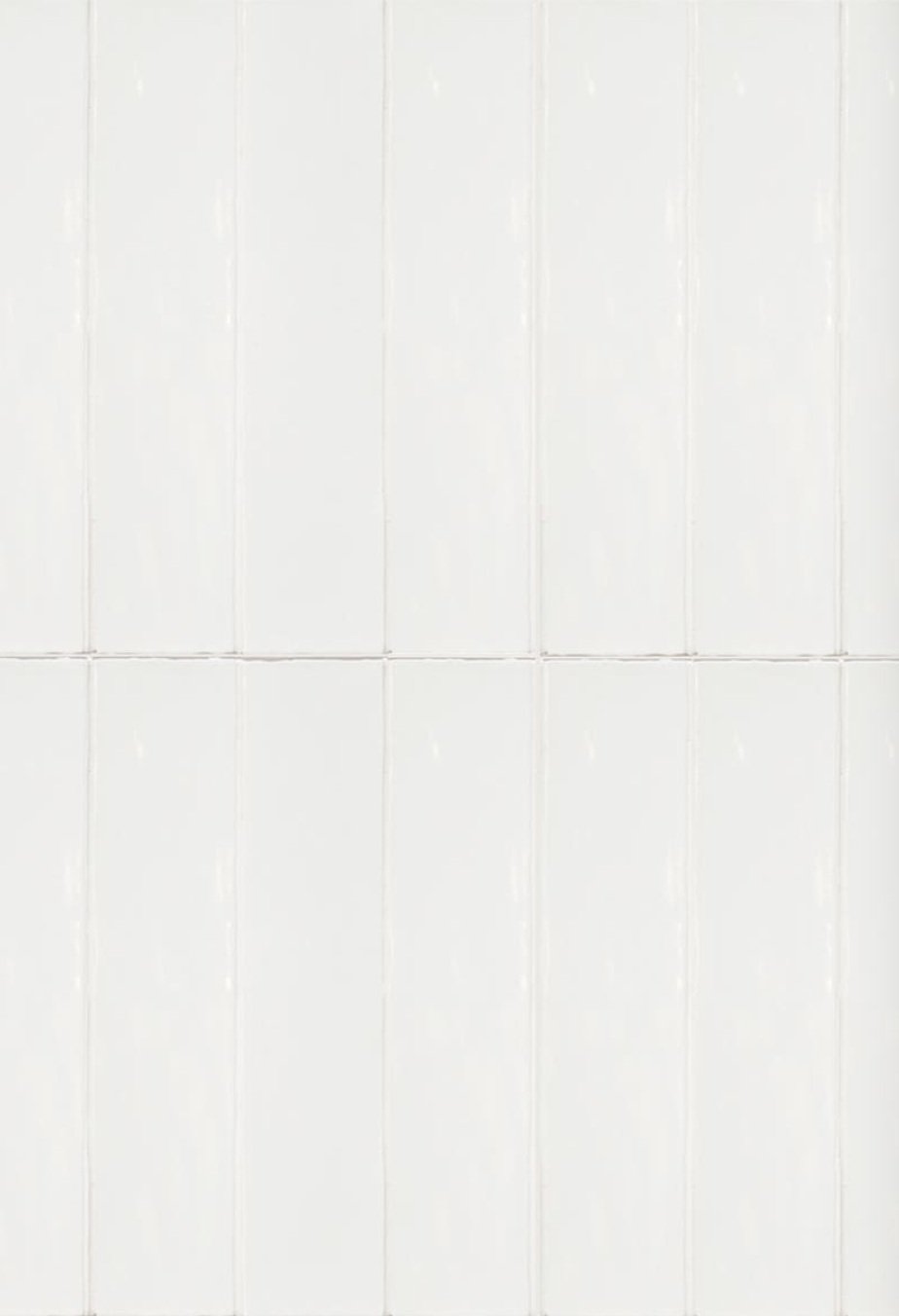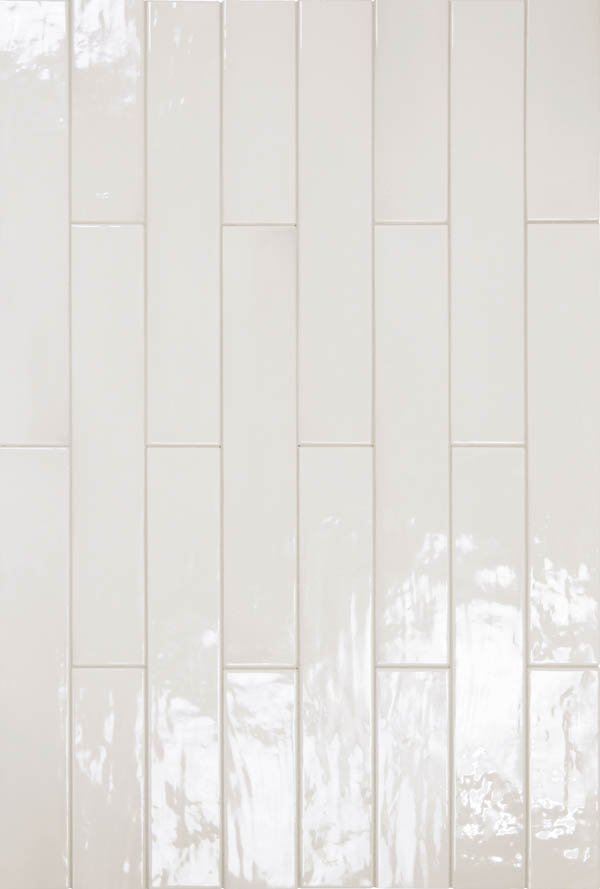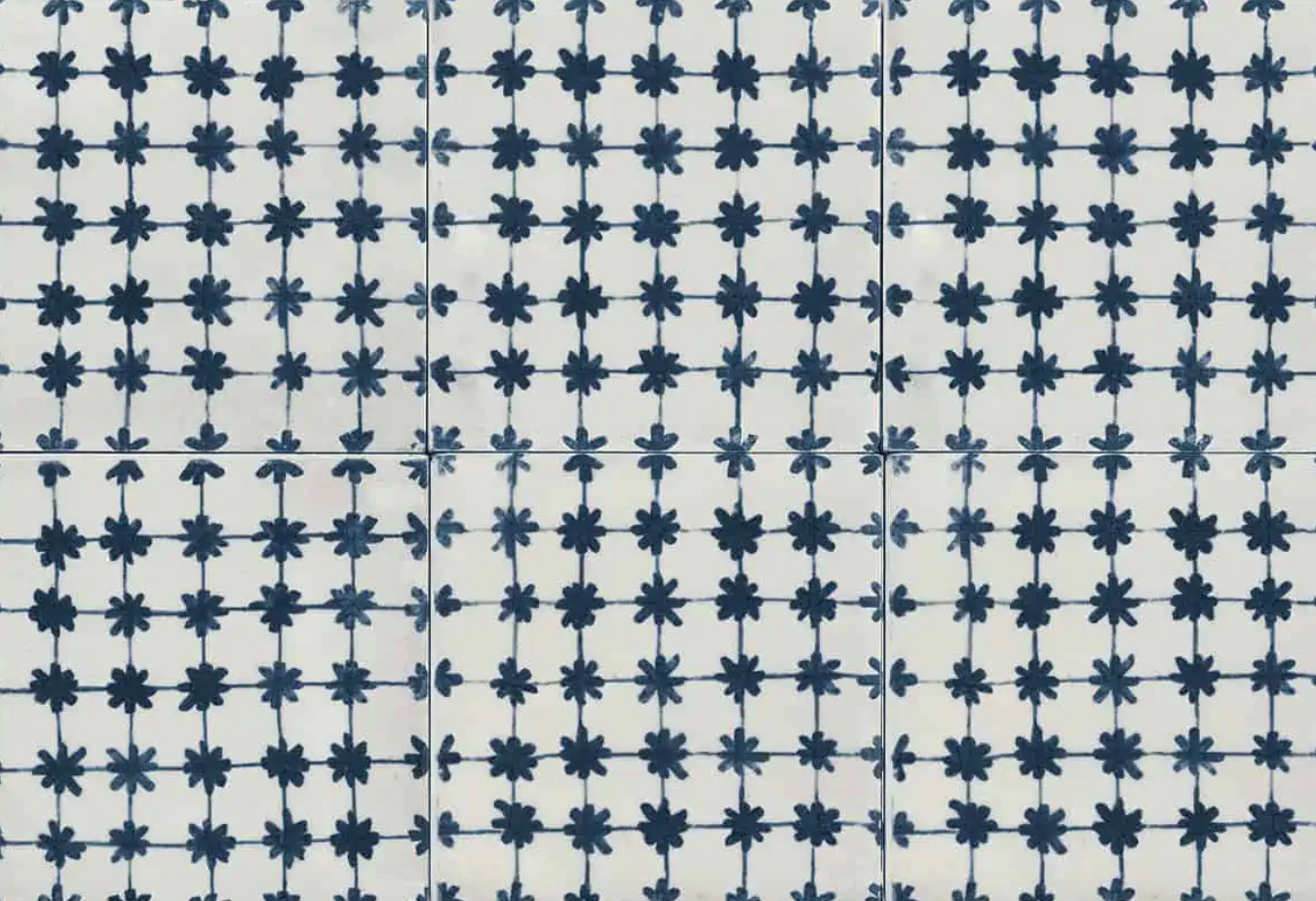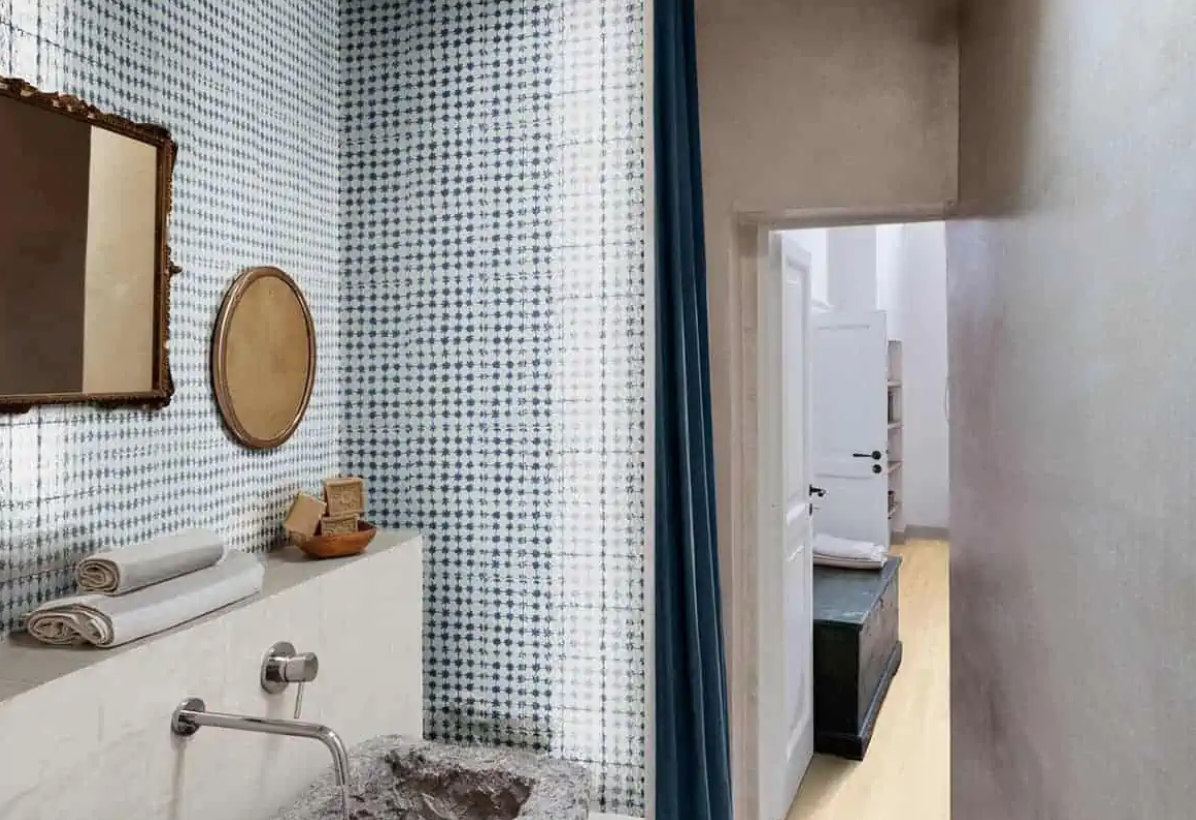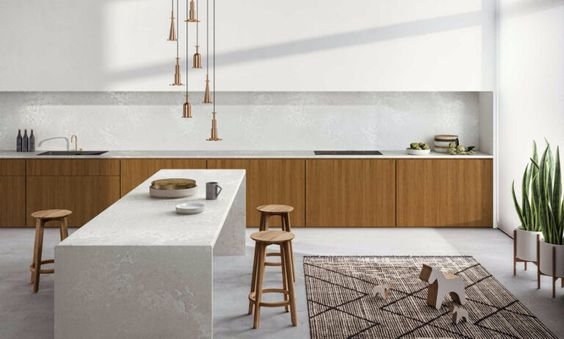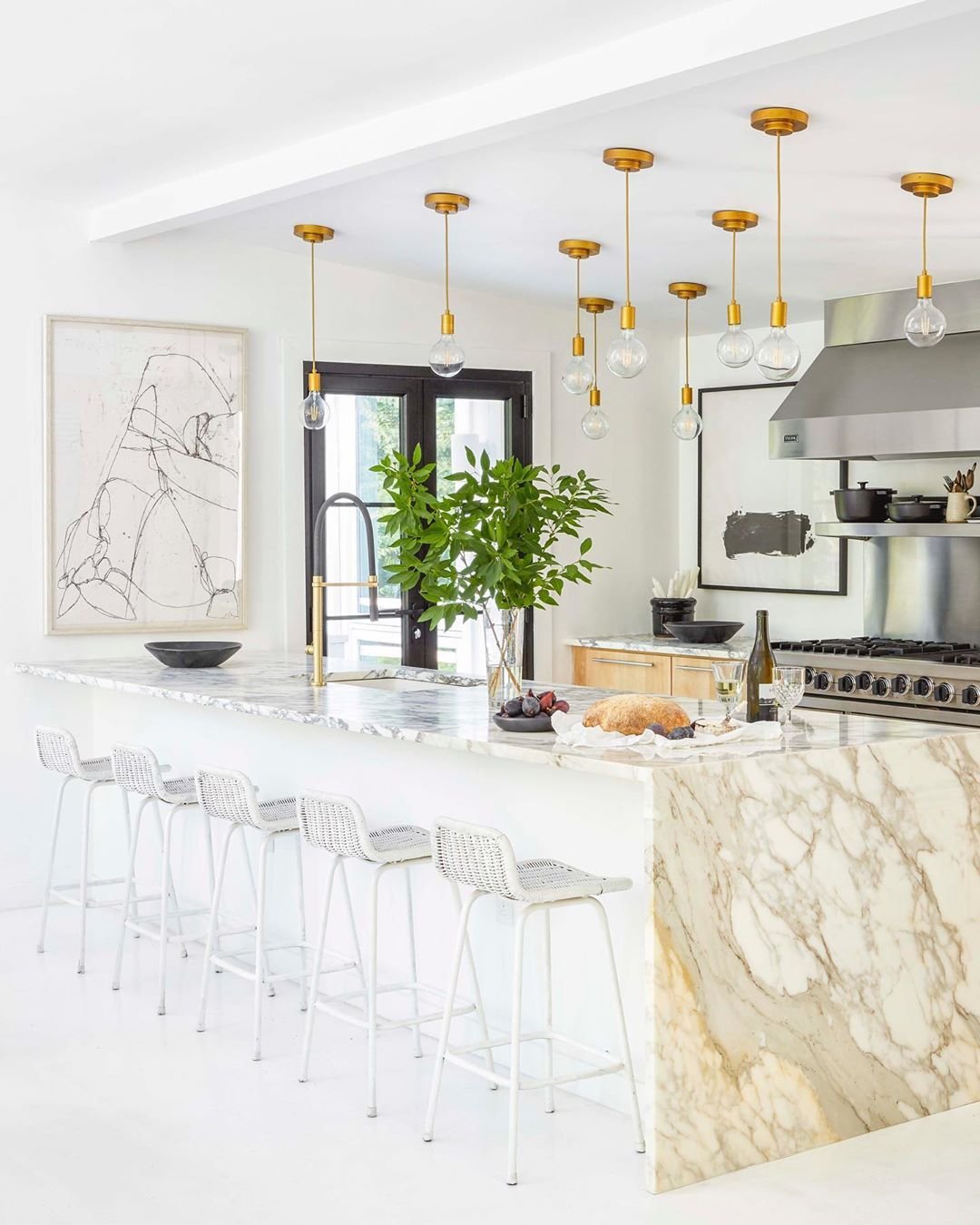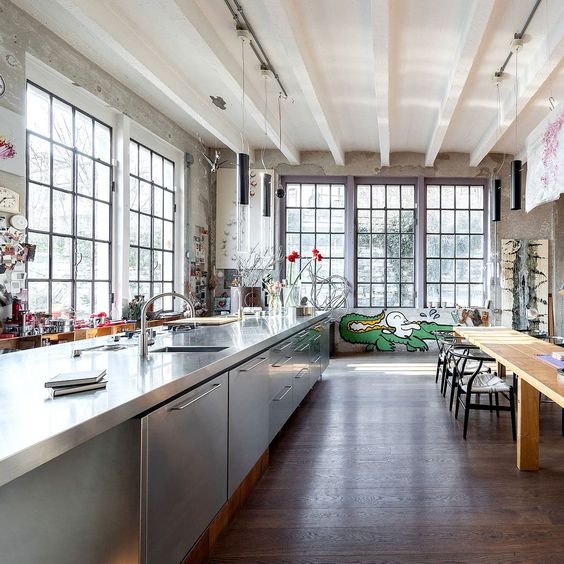Test fit your office BEFORE you lease
How to feel confident an office space works for your team — before you lease:
איך לוודא שהמשרד יעבוד לצוות שלכם — לפני שמחתימים על השכירות:
Do a test fit. 👇 עברית למטה
A client came to me to see if this angular corner office space could work for his therapy practice.
It’s tight.
He wants four private rooms — one more spacious than the others — plus a conference room with a therapy space and a receptionist desk, waiting area, and kitchenette.
I managed to give every office a window view, but many areas are a squeeze.
Will it work?
Jury’s out on what he decides.
Every client has their own priorities.
When you do a test fit before making a final decision on a space, your final decision is made with confidence that you’re meeting your key needs.
Want to test fit an office you’re considering? Email me at dsiegelstudio@gmail.com with TEST FIT in the subject line.
---
תעשו טסט פיט.
לקוח פנה אליי לבדוק אם משרד פינתי עם קירות בזווית יכול להתאים לקליניקה שלו.
צפוף.
הוא רוצה ארבעה חדרים פרטיים — אחד קצת מרווח יותר — בנוסף לחדר ישיבות שמשמש גם לטיפולים, עמדת קבלה, אזור המתנה ומטבחון.
הצלחתי לתת לכל משרד נוף מהחלון, אבל כל אזור קצת צפוף.
זה יעבוד?
עוד לא ברור מה הוא יחליט.
כל לקוח והעדיפויות שלו.
כשעושים טסט פיט לפני שמקבלים החלטה על משרד, אפשר לבחור בביטחון — ולדעת שהמקום באמת מתאים לצרכים שלכם.
dsiegelstudio@gmail.com :"רוצים לבדוק משרד שאתם שוקלים? תכתבו לי "טסט פיט.
Avoid facing a wall
I recently did a consultation at a small office. This is the most important layout suggestion I made:
Try not to face a wall.
The space was arranged with three desks, all facing a wall (pic 1 ❌).
If I was that person at the bottom right, I would not be happy about being stuck near the bathroom and staring at a wall in a dark corner.
The CEO had the largest desk, already firmly planted near the window with five monitors on it. Let’s say we leave that as is.
I gave them a few alternatives for the other two employees, including pics 2 ✅ and 3 ✅.
In pic 2, the team is more united and the two assistants get to face the window instead of the wall. They have a solid support behind them (the closet), which gives a feeling of stability.
There’s room for plants, plus a bookshelf by the bathroom.
In pic 3, the team sits together for easy communication. I would give the assistants high-backed chairs, again for stability and comfort.
Here too there's room for plants and storage.
Which would be your preference?
Ingenious innovation in indoor plants
Last month I had a fascinating visit and lab tour of Tomgrow. They’re an Israeli agri-tech company with a patented dirt-free, low-water solution for indoor plants: a nutrient-rich gel that keeps the plants hydrated and thriving (even in artificial light).
Growing plants in Tomgrow’s gel means you skip the mess and hassle of dirt and water your plants only once or twice a year (!). The easy upkeep makes designing greenery into the office a breeze, and it also means plants can be near computers and tech without risk, making for endless design options.
Bringing plant life and natural elements into the office improves employee well-being and makes the office a place people enjoy spending time in.
A big thank you to Tali Osadon, who showed me how Tomgrow’s gel is made and the experiments they’re doing to continuously optimize its performance and expand the line of plants they can grow, from flowers to produce.
Love seeing Israel take the lead in green and efficient solutions in biophilic design!
Anatomy of a Kitchen 101
(Because Python won’t program your mug storage for you)
𝗣𝗿𝗼𝗯𝗹𝗲𝗺: Pillars in the middle of the space
𝗦𝗼𝗹𝘂𝘁𝗶𝗼𝗻: Wrap island around pillar and adjust cabinet depths
𝗣𝗿𝗼𝗯𝗹𝗲𝗺: Beams running through the ceiling
𝗦𝗼𝗹𝘂𝘁𝗶𝗼𝗻: Tuck lighting neatly behind to conceal and wrap carpentry
𝗣𝗿𝗼𝗯𝗹𝗲𝗺: Client wants to store Passover items nearby but there’s no space
𝗦𝗼𝗹𝘂𝘁𝗶𝗼𝗻: Blow out a boydem/attic overhead to create ladder-accessible storage
𝗣𝗿𝗼𝗯𝗹𝗲𝗺: Pillars need to be indestructible
𝗦𝗼𝗹𝘂𝘁𝗶𝗼𝗻: Cover in stain-resistant porcelain tiles that mimic Jerusalem stone
𝗣𝗿𝗼𝗯𝗹𝗲𝗺: Many appliances to store, some that get used often
𝗦𝗼𝗹𝘂𝘁𝗶𝗼𝗻: Appliance garage with built-in outlets
𝗣𝗿𝗼𝗯𝗹𝗲𝗺: Client wants a second fridge, but building a new kitchen around two separate fridges is inelegant
𝗦𝗼𝗹𝘂𝘁𝗶𝗼𝗻: Get one large 120cm double fridge instead
𝗣𝗿𝗼𝗯𝗹𝗲𝗺: Client visits appliance store and thinks the freezer section is too narrow
𝗦𝗼𝗹𝘂𝘁𝗶𝗼𝗻: Rework plans to accommodate a 140cm fridge with a better freezer
𝗣𝗿𝗼𝗯𝗹𝗲𝗺: Client has tons of stuff
𝗦𝗼𝗹𝘂𝘁𝗶𝗼𝗻: Build extra cabinetry under the bar
𝗣𝗿𝗼𝗯𝗹𝗲𝗺: Client also wants vertical pan storage, pull-out garbage, built-in drying racks, towel holders, display shelving, corner storage, a netilat yadayim, cold water, a large island, onion and potato drawers, two ovens, two dishwashers, three separate utensil areas, and custom storage for oversized and unusually shaped items
𝗦𝗼𝗹𝘂𝘁𝗶𝗼𝗻: Plan it baby.
Every client is different. Every space is different. And for every client and space there are unique solutions.
Float your desk
Many people instinctively push their desks against a wall.
Try the Feng Shui 𝗰𝗼𝗺𝗺𝗮𝗻𝗱 𝗽𝗼𝘀𝗶𝘁𝗶𝗼𝗻 instead.
You should face outward with a clear view of the door and your back to a solid wall for a sense of security, control, and leadership (CEO). This setup minimizes distractions and helps you feel more at ease.
Desk tips:
✅ 𝗙𝗮𝗰𝗲 𝘁𝗵𝗲 𝗱𝗼𝗼𝗿, 𝗯𝘂𝘁 𝗻𝗼𝘁 𝗱𝗶𝗿𝗲𝗰𝘁𝗹𝘆 𝗶𝗻 𝗹𝗶𝗻𝗲
Position your desk to see the entrance without sitting directly in front of it, for better awareness and energy flow.
✅ 𝗦𝗼𝗹𝗶𝗱 𝘀𝘂𝗽𝗽𝗼𝗿𝘁 𝗯𝗲𝗵𝗶𝗻𝗱 𝘆𝗼𝘂
Place a solid wall or high-backed chair behind you for stability. Avoid sitting with your back to a window unless covered with curtains (backlighting can turn you into a silhouette on Zoom).
✅ 𝗕𝗮𝗹𝗮𝗻𝗰𝗲𝗱 𝘀𝗽𝗮𝗰𝗲 𝗼𝗻 𝗯𝗼𝘁𝗵 𝘀𝗶𝗱𝗲𝘀
Avoid placing your desk too close to a wall; keep both sides open or supported by furniture for balance.
✅ 𝗗𝗼𝗻'𝘁 𝗳𝗮𝗰𝗲 𝗮 𝘄𝗮𝗹𝗹
If necessary, use mirrors or artwork to create a more open, inspiring space.
✅ 𝗚𝗼𝗼𝗱 𝗻𝗮𝘁𝘂𝗿𝗮𝗹 𝗹𝗶𝗴𝗵𝘁 𝗮𝗻𝗱 𝗮𝗶𝗿 𝗳𝗹𝗼𝘄
Sit near (but not in front of) a window if you can.
Experiment with floating your desk and see how it transforms your workflow and mindset.
From Spreadsheet to Bookshelf
In the #beershevatraditional project, my clients wanted a wall-to-wall, floor-to-ceiling bookshelf to accommodate their library. Their library included books of all shapes and sizes, from kids books accessed daily to various sets of Jewish sefarim to tall megillot used once a year. My clients wanted each type of book to have a clear home, with little space wasted above and around the books. That meant that a set of short 17-cm books needed a different size shelf than a 32-cm-tall set, and a 41-cm-wide set and 90-cm-wide set needed different neighbors. Out the window went the symmetrical bookshelf, in came the spreadsheet:
I ran a few trials to figure out how and where on the bookshelf each type of book could be placed. Once we landed on an arrangement that felt good to them, I tweaked surrounding shelves to make the asymmetry cohesive. Below is where we landed. Since they wanted to keep the existing AC units throughout the home, we worked around the living room AC. And because we needed a tall space high up to accommodate the infrequently used megillot, at left, I balanced this out with a tall space at lower right, in keeping with the overall asymmetry of the piece.
Below you can see the living room when the previous owners still lived there. We removed the old light fixtures as well as the drywall-plus-lighting piece jutting out at top right.
My clients also wanted electrical outlets within the bookshelf, and we included two sconces on the bookshelf for atmospheric lighting. When you want electrical points all over a concrete wall, this is what it looks like to make that happen:
And here’s the bookshelf during installation:
It’s been a while since my clients moved in. I’m looking forward to taking final photos before 2024 wraps.
Distributed Play
I set up our apartment to accommodate the mayhem of two toddlers at play who sometimes need a change of scene. Toys and activities are spread throughout the home, from living room to dining room to hallway to kids rooms. When movement is part of the design, everything feels a little less crazy.
Photo: Peled Studios \ יואב פלד צילום אדריכלות
We have an IKEA Trofast storage unit in the living room as well as by the dining table leading to the hallway. It’s easy for kids to pull out toys and for us to switch out bins with different toys from time to time to keep things fresh. I have found that removing a few bins at the top (unlike in these photos) makes for easier cleanup because you don’t need to pull out every bin to dump toys back in. Generally, having fewer toys available helps kids focus.
Photo: Peled Studios \ יואב פלד צילום אדריכלות
Photo: Peled Studios \ יואב פלד צילום אדריכלות
The kids can hop seamlessly from the living room floor to the dining room table to the play corner. Defining areas by type of activity (e.g., building, arts and crafts, make believe, reading) helps create sanity.
Photo: Peled Studios \ יואב פלד צילום אדריכלות
Immediately after putting the round rug down in Sol’s room, the kids started running around it in circles and laying dolls and stuffed animals around its periphery. It’s great to have for any activity where you want to gather around (pass the balloon, story time, etc.).
Photo: Peled Studios \ יואב פלד צילום אדריכלות
Photo: Peled Studios \ יואב פלד צילום אדריכלות
In Talia’s room, the teepee and book corner work just as well for intimate reading time as they do for going nuts with the floor mats.
Choosing My Kitchen Backsplash (a Fairy Tale)
When we made Aliyah in 2021, we moved into a newly built apartment in Modiin fresh from the kablan (contractor). Because we’d been Airbnb’ing for 6 weeks already and I was 9 months pregnant, we were eager to get the keys, so the owner rushed the final to-dos and left the kitchen without a backsplash. As you can see below, this isn’t great for the wall behind the sink or the stove.
The owner is now selling the apartment and we’ll likely get the boot within a year, but I’m taking a trip down fairy tale lane to consider how I’d tile the backsplash. If we zoom out for a second you’ll see there’s already a lot going on in the living room and the surrounding areas:
If I was to do a color, a green tone could be nice, to complement the plants and contrast the red and pink hues of the living room. I’d do a vertical or square pattern to balance the horizontal cabinetry. These mint tiles from Tile Israel could work, but I’d place them side by side rather than staggered for a more streamlined modern look. I really love these colorful green and white tiles from Balatot, but they’re too busy as pictured. Choosing just one or two of the tones could be fun. And I like these deep green squares from Milstone, but they feel too dark for this kitchen.
Here’s a test using just one of the green shades from the Balatot tile set:
If the white half of the tile is actually white and not grayish like this photo from online suggests, then I like it. This one requires some in person research, so let’s move on for now.
If I was to lay off the color and get white tiles, they should be matte, because the cabinets are already glossy, and white gloss on white gloss is overkill in this context. A plain white tile could work, but something with texture would be more interesting. I found this textured white tile from Studio Ceramica that looks wonderful:
The downside is it’s probably terrible to clean and not ideal for a grease-catching kitchen backsplash. (I’d look into this further to be certain.) If we’re back to the drawing board with whites, these Milstone and Kal Vahomer rectangles are available in a matte finish and would be a simple elegant option, stacked cleanly like at left.
So that’s a workable white solution. But it’s a bit of a yawn. And while there’s nothing wrong with a good clean yawn in a good clean kitchen (I do love a white kitchen), I keep circling back to the tiles on speed, like this blue asterisk pattern from Milstone:
Testing it….
Kind of cute, no?
If I were really getting a backsplash right now, I’d visit tile showrooms in person.
Another option is to have the Caesarstone countertop continue up the wall, not have to choose a single tile, and live happily ever after.
Notes on Kitchen and Bathroom Countertops
Quartz countertop (image source)
The variety of countertop materials and brands available will make your head spin, and the roundup of types below won’t necessarily stop the spinning. But you will start to understand what options are available and consider what your priorities are with respect to durability, affordability, and beauty.
When you purchase your countertop (shayish - שיש):
Talk to the supplier about how many pieces it will come in. The more pieces it comes in, the more seams you’ll see (and potentially need to maintain).
Ensure you are purchasing the material and brand you are seeking and not a knockoff; check for seals and certificates.
Ask whether your warranty is dependent on using an installer certified by the company.
Note that I’ve borrowed text liberally from the sources listed at the end of this post.
Quartz countertop (image source)
Engineered Stone
Quartz
“Quartz countertops are engineered stone products that may contain a large percentage of natural quartz but may also include other minerals. They are not slabs of quarried stone but are instead formed from stone byproducts that are ground up and formed into slabs for countertops and other products.” (The Spruce)
Leading suppliers: Caesarstone (an Israeli company with 90% of the market share), Silestone (owned by Spanish company Cosentino and has antimicrobial properties)
Pros
Relatively easy to maintain, no sealing required
Slabs are uniform, with no imperfections
Can be custom-fabricated in any size and shape
Relatively scratch and stain resistant (with consistent cleaning — spills cannot be neglected)
Natural appearance, stone-like feel to the touch
Cons
Expensive
Countertops are very heavy
Can be stained if neglected
Can be warped by extreme temperature changes or contact with strong chemicals or detergents
Affected by UV rays over long periods
Quartz cleaning solutions Facebook users swear by: Astonish scrub, Cillit Bang spray, Sano Javel
The key is to treat stains immediately. Don’t leave anything on your countertop overnight or long term (coffee spill, turmeric, a pot you washed), though you can sometimes still clean these later with a lot of effort (and nerves).
Porcelain
Porcelain is heat and stain proof, but it also has a more synthetic feel. Those who want to be able to put hot pots directly on their countertops and not worry about stain cleanup should consider this option. Those who love the luxurious feel of stone may not be satisfied with porcelain.
Leading suppliers: Caesarstone, Laminam, Dekton, Infinity, Neolith
Pros
Extremely heat-resistant
Stain proof
Unaffected by UV rays
Can be installed on top of existing countertops
Cons
More expensive than quartz
Thinner than quartz
Fragile upon installation and can chip easily
Veining often less real-looking and texture feels more synthetic than stone-like
There is hot debate in Facebook groups about Dekton’s durability. Some say Dekton is the most durable and sophisticated option and won’t chip with normal use, while others say suppliers are wary of working with the product because of chipping potential. Dekton has a higher amount of glass in it than other porcelains, so it can more easily crack when hit hard or on its edges. However, designers say the durability has improved over the past five years.
Corian countertop with integrated sink (image source)
Synthetic
Solid-Surface Material (Corian)
Corian, by DuPont, is the leading synthetic countertop brand in Israel (imported). Its main advantage is that “pieces can be glued together with a solvent so that the seams are entirely invisible. This gives the appearance of a huge, continuous slab of unseamed countertop,” for example for creating a seamless countertop–sink integration. (The Spruce)
Pros
Resists staining
Seams are virtually invisible
Damage can be easily sanded out
Large range of colors and patterns
Integrated sink/countertop units are available
Cons
Moderately expensive
Can be scratched by metal
Prone to heat damage
Granite countertop (image source)
Natural Stone
Granite
“Granite is a purely natural stone that comes directly from stone quarries and is then cut into thin slabs, polished, and fabricated into countertops.” (The Spruce) “Its natural appearance has a medium- to course-grained texture and comes mostly in medium to dark colors with a polished surface. In Israel, granite is imported mainly from Italy and South America.” (Buy It in Israel)
Pros
Strong, durable, and heat-resistant
Least absorptive of the available countertops
Nearly maintenance-free when treated with newer sealers
Every slab is unique
Cons
Very expensive
Slabs may have imperfections/variations
Can crack if stressed or improperly installed
Stone is porous and requires sealing to avoid stains
Marble countertop (image source)
Marble
The crème de la crème of natural stone, only marble has the much-prized unique veining detail running through its full depth. But it’s a nightmare to maintain in the kitchen.
Pros
Beautiful stone with unique veining
Heatproof
Cons
Stone is porous and stains easily (even by water left on too long)
Requires annual sealing
Expensive
Can be scratched; repairs are difficult
Quartzite
“Quartzite is sandstone fused with sparkly quartz crystals using heat and pressure. Quartzite looks more like marble or granite with delicate veining and usually costs a little more” than quartz. (The Spruce) It’s often white and gray but can have colorful undertones.
Pros
Strong and durable (more than marble)
One-of-a-kind natural appearance; glassy look that resembles marble
Cons
Stone is porous and requires annual sealing to avoid stains
Avoid contact with extreme heat
For extra protection, choose a honed rather than polished finish.
Stainless steel countertop (image source)
Alternatives to Stone
Stainless Steel
Consider stainless steel for a modern, industrial look. This can work well in an office, where cooking and cutting are minimal.
Pros
Heat- and water-resistant
Easiest of all countertop materials to clean
Cons
Noisy
Very expensive to fabricate
Can be easily scratched; not a cutting surface
Material can leave fingerprints
Butcher block countertop (image source)
Wood/Butcher Block
Wood countertops come in a variety of colors and finishes and give a rustic look to the kitchen. However, they require a lot of maintenance and are not as durable as the more popular stone and synthetic alternatives. (Buy It in Israel)
Pros
Relatively easy to clean
Long-lasting when properly cared for
Can be sanded and resealed, as needed
Cons
Fairly expensive
Surfaces can be scratched and cut by knives
Can be damaged by water and stains over time
Bacteria can be a problem if not properly maintained
Wood is subject to cracking if not maintained; must be oiled and sealed frequently
Glass
“Similar technology [to engineered stone] is now being used in so-called glass countertops, which consist of particles of recycled glass blended with resins and shaped into countertop slabs. Consumers keen on being on the cutting edge may want to consider glass as well as quartz countertops.” (The Spruce)
Pros
Non-porous
Sanitary
Heat- and stain-resistant
Cons
Scratches easily
Expensive
Material can leave fingerprints and water spots (not practical for families)
Laminate
“Laminate counters … are plastic-coated synthetics with a smooth surface that's easy to clean. Countertops are made by bonding the laminate sheets to a particleboard (MDF) core. Laminate countertops can be purchased as pre-formed segments (called ‘post-form countertops’), or custom-fabricated to specifications, either on-site or in a fabrication shop.” (The Spruce).
Popular supplier: Formica
Pros
Very easy to maintain
Thousands of options available
Very inexpensive
Cons
Seams are always visible
May be viewed as too average by potential home buyers
Surfaces can be scratched and chipped; damage is almost impossible to repair
I read on a Facebook thread that someone had trouble finding a contractor to install a laminate countertop for fear of moisture damage. It’s a less popular option in Israel.
Concrete countertop (image source)
Concrete
“If you have countertops in unusual shapes, or if you want a truly unique kitchen, concrete may be a good choice for your countertops. Due to their heavy weight, concrete countertops are usually cast in forms right in your kitchen.” (The Spruce)
Pros
Can be color-tinted
Heat- and scratch-resistant
Decorative textures and colors are possible
Cons
Cracking may occur over time
Costs are high due to custom work
Surface is porous unless regularly sealed
Tile countertop (image source)
Ceramic Tile
“Ceramic tile is durable and easy to clean, and it is considerably less expensive than natural stone, quartz, or solid-surface countertops, especially for DIYers willing to do their own work. Recent innovations in porcelain tiles offer many more design options than ever before, including tiles that look like wood, marble, or even leather or cork. Ceramic and porcelain tiles offer more design options than nearly any other countertop material.” (The Spruce)
Pros
Easy to clean (grout aside)
Usually affordable
Immune to heat damage from hot pans (choice of tile dependent)
An enormous range of colors and styles available
Cons
Custom tiles can be very expensive
Tile are brittle and may crack under impact
Grout lines can stain and are difficult to clean
Edges require skilled installation for a clean look
———
Sources
Kitchen countertops in Israel: https://www.buyitinisrael.com/news/kitchen-countertops-in-israel/
Top kitchen countertops:https://www.thespruce.com/top-kitchen-countertops-1977143
Quartz vs. granite: https://www.thespruce.com/quartz-vs-granite-countertops-1822078
Quartz vs. porcelain: https://graniteselection.com/blog/quartz-vs-porcelain-countertops-which-one-is-the-best/
Corian vs. granite: https://www.thespruce.com/corian-vs-granite-which-is-better-1822082
Marble: https://www.thespruce.com/kitchen-marble-countertops-1822076
Facts about quartz countertops: https://www.thespruce.com/facts-about-quartz-countertops-1821233
Super White Quartzite everything you need to know: https://aquakitchen.com/super-white-quartzite-everything-need-know/amp/
Tips from the trade quartz vs. quartzite: https://www.msisurfaces.com/blogs/post/2017/10/09/tips-from-the-trade-quartz-vs-quartzite-countertops-what-is-the-difference-anyway.aspx
Quartzite countertops vs quartz countertops: https://www.caesarstoneus.com/blog/quartzite-countertops-vs-quartz-countertops/
The Building in Israel Facebook group
Notes on Air Conditioning Systems
Shimon Alperet of Avoda Tova ran a great seminar for interior designers yesterday on types of air conditioning systems. A few notes:
Types of Air Conditioning Systems
Models aside, there are two ways an air conditioner can work:
ON/OFF - Always runs at full power; when it reaches the desired temperature, it turns off, then back on again when temperature changes; makes air dry; energy bills are much higher; loud; unit is cheaper than inverter
INVERTER - Compressor does not run at full power, rather keeps working at a lower intensity; maintains desired room temperature; lower energy bills (by 30-50%); at times better left on and running than constantly powered on and off; quieter; unit is more expensive
If you plan on using your AC a lot (like we do in Israel), the inverter technology may be the best investment for the long haul.
If you opt for ON/OFF, you can choose to install:
Individual units in every room, or
Central air conditioner (mini mercazi), which will send air to every room from a central unit; cannot adjust temperature per room
If you opt for an INVERTER system, you can choose between:
Single - One outdoor unit connected to one indoor unit (for targeted air in a single room)
Multi - One outdoor unit connected to multiple indoor units; each indoor unit can be run independently; saves space outdoors; energy efficient; each indoor unit must be connected to the outdoor unit with cables / piping / tzinorot
VRF (variable refrigerant flow) - Each room’s temperature can be controlled individually and precisely, with one main unit outside; ductless — no tzinorot need to be funneled outside to the main unit, so nothing gets in the way of the air; saves space structurally; works well with long distances / large spaces; expensive
Types of Vents
Decor vents (image source)
Decor - Older vent model; more affordable; can come in any size you want
Slot - Typically two or three air passageways that create a modern, streamlined look; can result in some excess air waste, but often a go-to for designers for aesthetic reasons
Slot vents (image source)
Rona vents (image source)
Rona - A thin line on the ceiling, about twice the price of slots
Jettim - Circular jets for moving air efficiently in large, high-ceilinged spaces
Jettim vents (image source)
Tips
Who makes the nicest vent solutions (and most expensive, about 3x): OpenArt
Make sure your air conditioner technician properly accounts for avir chozer (return air); return ducts bring air that has been warmed or cooled back to your main unit (source).
One designer told the story of a technician who did not account for avir chozer properly and a giant gust of air prevented a door from being closed.
Ideally, return air ducts can be passed right underneath or next to the main air ducts within the drywall.
Consider leaving at least 10cm of space behind your kitchen cabinets for avir chozer to run through.
One designer said she always makes her 60cm-deep kitchen cabinets 80cm out to align with standard refrigerators that would otherwise stick out — those remaining 20cm in back work great for funneling out avir chozer.

